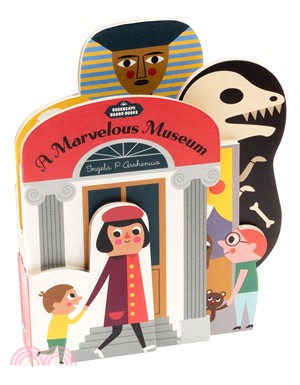The Poet's Brush:Chinese Ink Paintings by Lo Ch'ing〈平裝〉
商品資訊
ISBN13:9786602450016
出版社:New Academia Pub Llc
作者:Jason C. Kuo
出版日:2016/01/01
裝訂/頁數:平裝/442頁
規格:29cm*22cm (高/寬)
商品簡介
羅清是中國最重要的當代詩人之一。 儘管他們的情況有所不同,許多當代中國畫家有一個共同的特點:他們受到與當代西方藝術接觸的刺激,但他們不只是模仿它; 相反,他們重新發現了在他們自己的傳統中的抽象和表現主義的可能性。 正是在這個意義上,它們是中國繪畫偉大傳統的繼承者。 通過他們在自己的工作中合成傳統文人繪畫的理論,技術和風格,他們能夠實現豐富了傳統的創新。 這些藝術家例證了作為當代中國藝術家的最好的方式之一。
Lo Ch'ing在他的工作中已經內化了這種相互衝突的傳統和現代性狀態(甚至後現代性,如果你願意)。 “中國傳統”在台灣環境中並不那麼微妙。 事實上,台灣是實驗性質的最奇怪和擁抱的地方,特別是在20世紀70年代末到80年代羅志明成名的時候。 工業化,後工業化的興起,台灣文化認同的好奇問題,為創造性人才培育和爭議的場地。 工業化和後工業化是羅青的工作的主體。 當然,Lo Ch'ing描繪外星人的碟子和浮動的岩石和山脈是有奇怪的,但Lo Ch'ing的作品呈現出一種新的好奇心,這在畫畫的實踐中沒有被探究過。 學者們經常用“改造中國風景”這個詞來描述和定義羅青的作品及其背後的動機,這是不完全正確的。 然而,正確的歷史術語,不是藝術家工業化的景觀,更不用說,可以輕易地爭辯說,台灣的城市景觀是一個與中國的景觀截然不同的景觀。 Lo Ch'ing's'在對這個問題的任何主題的呈現方面具有更高的意識感,Lo Ch'ing的工作非常清楚其內容源自的環境。 城市性,有趣的是,將是一個反對中國文人山水畫的傳統的想法,因為它意味著自然的破壞。
讚美
“在羅青在繪畫和詩歌方面的多樣創意工作中,人們發現了一種不斷的玩耍,最嚴肅的玩法。 Lo結合了對媒體的掌握和在最意想不到的方向推動它的能力,留下他的觀眾與詭異,諷刺和智力具有挑戰性的工作。 這個範圍從圖形雙關語到概念謎,從小貓到黑洞。 畫筆成為內容; 內容變為形式。 羅的繪畫和Jason Kuo對這些作品的考慮的強有力的證據證明了這個可怕的頑皮的過程。
--Joseph R. Allen,明尼蘇達大學中國文學與文化研究教授,雙子城; 市位移:台北的作者
“羅成英自1970年代以來一直是中國文學界和藝術界的核心人物,在寫作本土詩歌的實踐中,以及在過去和現在中國的相當保守的水墨畫傳統中脫穎而出。 Kuo的書是他的藝術工作的一個重要的學術貢獻,這是,如果沒有別的,一貫和系統地破壞過於簡單的類型的風格,類型,甚至媒體,視覺和語言。
- Paul Manfredi,太平洋路德大學中國研究項目中文主席副教授; 現代詩歌在中國的作家:一種視覺語言動態
Lo Ch’ing is one of China’s foremost contemporary poet-painters. Despite the differences in their circumstances, many contemporary Chinese painters share one common trait: they have been stimulated by contact with contemporary Western art, but they did not merely imitate it; instead, they have rediscovered the abstract and expressionistic possibilities in their own tradition. It is in this sense that they are heirs to the great tradition of Chinese painting. Through their synthesis of the theories, techniques and styles of traditional literati painting in their own work, they were able to achieve innovation that enriched the tradition. These artists exemplify one of the best ways to be contemporary Chinese artist.
Lo Ch’ing has internalized such conflicting state of tradition and modernity (or even post-modernity, if you will) in his work. The “Chinese tradition” takes a not so subtle turn in the Taiwanese environment. Indeed, Taiwan was, incidentally, the most curious and embracing place for matters of experimental nature, particularly during late 1970’s to 1980s when Lo Ch’ing rose to fame. The rise of industrialization, post-industrialization, and curious issue of Taiwan’s cultural identity created a nurturing and controversial ground for creative talents. Industrialization and post-industrialization are subjects of Lo Ch’ing’s work. Certainly, there is an oddity in Lo Ch’ing’s depiction of alien saucers and floating rocks and mountains, yet Lo Ch’ing’s work presents a fresh curiosity that had not been explored in the practice of in painting precisely for that reason. Scholars often used the phrase “reinvention of the Chinese landscape” to describe and define Lo Ch’ing’s work and his motivation behind it, and it’s not entirely correct. To put it in correct historical term, however, it was not the artist who industrialized the landscape, not to mention one can easily argue that the urban landscape of Taiwan is one that is drastically different than landscapes in China. Lo Ch’ing’s’work has a heightened sense of awareness in its presentation of any subject in this matter, and that Lo Ch’ing’s work is very conscious of the environment that its content was derived from. Urbanity, interestingly enough, would be an idea that is in opposition to the tradition of Chinese literati landscape painting, for it means the destruction of nature.
“Throughout the arc of Lo Ch’ing’s diverse creative work in both painting and poetry, one finds a constant sense of play, play of the most serious kind. Lo combines mastery of the media with an ability to push it in the most unexpected directions, leaving his audience with wry, ironic, and intellectually challenging work. This ranges from the graphic pun to the conceptual enigma, from kitty cats to black holes. Brushwork becomes content; content becomes form. This collection of Lo’s paintings and Jason Kuo’s contemplation of them are powerful testament to that poignant playful process.”
—Joseph R. Allen, Professor of Chinese Literature and Cultural Studies, University of Minnesota, Twin Cities; author of Taipei: City of Displacement
“Lo Ch’ing has been a central figure in Chinese literary and art circles since the 1970s, breaking molds in the practice of writing vernacular poetry and in the rather conservative ink-painting traditions of past- and present-day China. Kuo’s book is a major scholarly contribution to his artistic work, which is, if nothing else, consistently and systematically disruptive of overly simple categories of style, genre, and even media, both visual and verbal.”
—Paul Manfredi, Associate Professor of Chinese and Chair of Chinese Studies Program, Pacific Lutheran University; author of Modern Poetry in China: A Visual-Verbal Dynamic
主題書展
更多書展今日66折
您曾經瀏覽過的商品
購物須知
為了保護您的權益,「三民網路書店」提供會員七日商品鑑賞期(收到商品為起始日)。
若要辦理退貨,請在商品鑑賞期內寄回,且商品必須是全新狀態與完整包裝(商品、附件、發票、隨貨贈品等)否則恕不接受退貨。
























